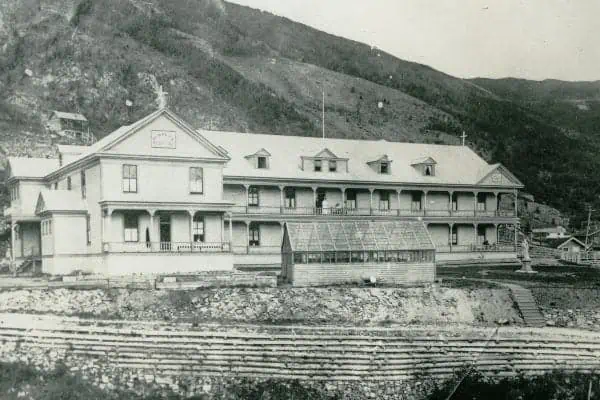Every now and then, a figure emerges out of the shadows of history with so much success and so many adventures that you swear they must be made up.
Without the historical record and extensive documentation, we might swear it is impossible for these people to exist. (After all, there’s only so much a person can cram into one lifetime.)
“Klondike” Joe Boyle is one of these legendary figures.
In Dawson City, Boyle is famous for organizing the Dawson City Nuggets’ challenge for the Stanley Cup in 1905. However, the Nuggets were less than successful in their Stanley Cup bid. They were smashed by the defending champions from Ottawa and set a record for goals against.
They were much more successful off the ice. Their journey across the country to make the challenge captured the imaginations of Canadians.
This particular tale is often told, and has led to a range of commemorations, including a visit to Dawson City from an Ottawa Senators alumni team last winter.
While the story of the Nuggets is an awesome one, it’s just one chapter in the life of an adventurer, entrepreneur, soldier and diplomat who became known as the “Saviour of Romania.”
When Joe Boyle was 17 years-old, he abruptly abandoned his home in Toronto, leaving behind only a note that read: “I’ve gone to sea. Don’t worry about me, Joe.”
Having snuck away, Boyle proceeded to make himself a name in the most dramatic fashion possible. While one of his fellow crew members was being threatened by a shark, Boyle drew a knife and attacked the fish, saving his shipmate’s life.
The incident was a hint of things to come.
Boyle arrived in the Yukon in 1897. He had little luck upon his arrival in the Klondike, failing to find a paying claim in his early attempts to strike it rich. Along with his travelling partner, Australian boxer Frank Slavin, Boyle went to work as a doorman at a local saloon.
However, it was not long before this out-of-luck adventure-seeker became a wealthy game-changer. In 1904, seven years after his arrival, Boyle founded the Canadian Klondike Mining Co. after acquiring large tracts of land, bit by bit over a number of years.
The Canadian Klondike Mining Co. went on to bring the dredges to the Klondike, change the face of the landscape and earn Boyle a fortune.
With the advent of the First World War, Boyle’s story takes a heroic turn. Restless earning his fortune in Dawson City, Boyle was compelled to participate in the epic conflict in Europe.
In his 40s, Boyle was too old to enlist. Nonetheless, by 1914 he was determined to get involved. He turned to the community around him, forming and financing a 50-man volunteer machine gun unit – Yukon’s first contribution to the Great War.
Boyle’s unit took heavy losses during the war, and fewer than half of his men returned home.
In 1917, Boyle’s role changed once again. He headed to the Eastern Front to help negotiate the peace treaty that would bring an end to active fighting between Russia and Romania, and to organize the railway system between the two countries.
Boyle carried out a clandestine operation in the spring of 1918 that led to the rescue of 50 Romanian aristocrats being held by the Bolsheviks in Russia, along with the Romanian crown jewels. This success earned him the name, “Saviour of Romania.”
Boyle may also have been involved in another sort of clandestine affair in those days.
The rumours at the time were that “Klondike” Joe Boyle and Queen Marie of Romania were romantically involved, although this was never confirmed. Boyle and Marie were close confidantes who spent a lot of time together – it isn’t hard to imagine a romance springing up between these two.
Boyle died in 1923. Compared with the fast-paced adventure-filled lifestyle that the man lived, his death was free from drama. Living in England in the post-war years, the Saviour of Romania fell into ill health and passed into a quiet death. He was buried at Hampton Hill.
For years after Boyle’s death, a mysterious woman in black arrived once a year to lay flowers at his grave. This flower-laying continued until 1938, which happened to be the year that Queen Marie passed away. It seems awfully likely that this woman in black was none other than the Queen herself.
A shark-stabbing, gold rush-joining, industrialist war hero who saved a nation’s elites and crown jewels before having an affair with their Queen, and managed to squeeze in a highly unsuccessful Stanley Cup bid…
They just don’t make them like they used to, I guess.




